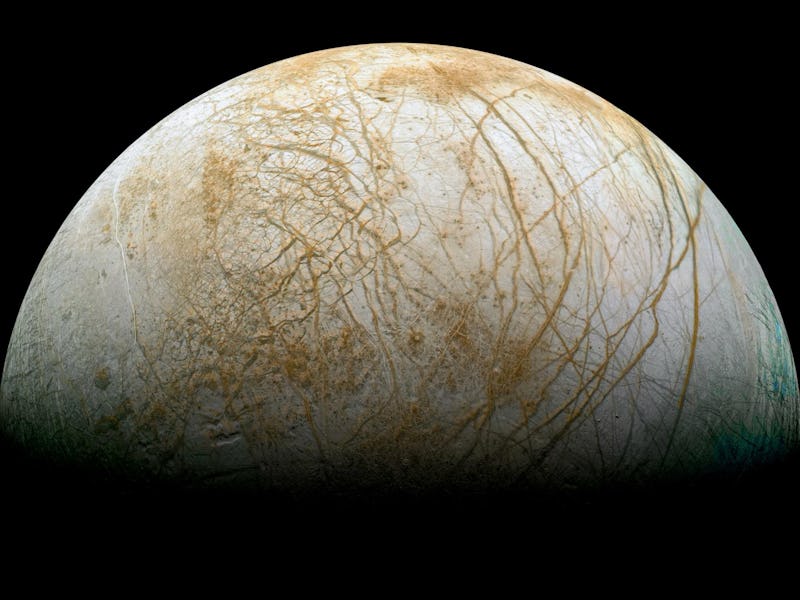Scientists suspect Jupiter’s moon Europa might be more Earth-like than we think. Thankfully, there are no sign of humans there.
That said, there might be something lurking on Europa, or in it. A new study published Monday in the Journal of Geophysical Research: Planets bolsters previous research that suggests the Jovian moon has plate tectonics, which could lead to life in what might be a subsurface ocean on the moon that’s 390 million miles from Earth.
Using computer simulations, a team of researchers at Brown University found that these hypothetical plates could interact with each other in subduction zones — regions where two plates converge and one moves under another.
According to the group’s model, different amounts of salt content on the plates — and therefore, different densities — could cause one slab to slip under the other. This is not the same as how subduction works on Earth, where temperature difference drive the process, not salt.
“Adding salt to an ice slab would be like adding little weights to it because salt is denser than ice,” the study’s lead author Brandon Johnson, an assistant professor in Brown’s Department of Earth, Environmental and Planetary Sciences, said in a statement. “So rather than temperature, we show that differences in the salt content of the ice could enable subduction to happen on Europa.”
Europa
If parts of Europa’s icy shell are reaching the moon’s hypothetical subterranean ocean, it could providing nutrients to alien life down there — heavy emphasis on “could,” of course.
“We have this evidence of extension and spreading, so the question becomes where does that material go?” Johnson said. “On Earth, the answer is subduction zones. What we show is that under reasonable assumptions for conditions on Europa, subduction could be happening there as well, which is really exciting.”
Europa’s surface contains oxidants, or substances that can snag electrons from other substances. These oxidants could feed whatever’s hiding in Europa’s waters.
“If indeed there’s life in that ocean, subduction offers a way to supply the nutrients it would need,” Johnson said.
Sadly, this doesn’t confirm life on Europa — but it does provide an added incentive for a mission to explore the mysterious moon. NASA: Please take note.
This is what it looks like to land on an alien moon.
